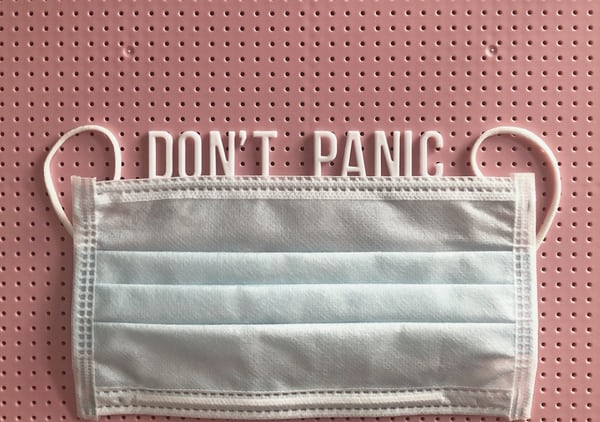Hazard Recognition –
Step 1 – Classifying the risk to workers
As the lockdown eases, have you conducted a thorough review and updated your Health and Safety procedures to ensure that your company is ready to return to work?
Companies are slowly starting to return to work, the pressure is on the individual(s) tasked with Health and Safety to identify the hazards they need to identify to ensure compliance with government guidance within their workplace.
We prepare now to return following the lockdown, is your organisation ready for the changes required to STAY SAFE?
How the Covid-19 virus spreads
To begin assessing whether your organization is ready for the above – the first step is to identify the hazards. To start, we first need to know how SARS-CoV-2 (Covid-19) spreads.
Like all coronaviruses, Covid-19 spreads via person-to-person transmission occurring during close (within 2m) contact. This primarily occurs via respiratory droplets which are produced when an infected person coughs or sneezes. These droplets may then be deposited in the mouth, nose, eyes, or, inhaled into the lungs of another.
People can also become infected by touching surfaces or objects contaminated with the virus, then touching their mouths, noses, or eyes. Current evidence suggests that pathogens may remain contagious for days on a variety of surfaces.
Identifying Potential Risks and Sources of Exposure
To begin assessing potential hazards, you should first consider if the workers will encounter someone infected with Covid-19 in the course of their work activities.
You should also assess whether workers could be exposed to the virus on work sites or via materials they could be handling.
You will also need to identify individuals who have signs and symptoms of the virus, or, have been in close contact with someone identified as sick with Covid-19.
Another point to note is that certain people, including older adults and those with underlying conditions, are at a greater risk of developing more serious complications from Covid-19.
Classifying Risk of Worker Exposure to Covid-19
If you have been tasked with managing the Health and Safety function within your company, then you will need to first classify the risk to the workforce. The current international standard is to divide work activities into four risk exposure levels: Low, Medium, High, Very High. Representing the probable distribution of risk.
Low Exposure Risk
Generally, work activities that do not require contact with people known to be, or suspected of being, infected with Covid-19. Examples include:
- Remote workers (i.e., those working from home)
- Office workers who do not have frequent close contact with coworkers, customers, or the public.
- Manufacturing and industrial facility workers who do not have frequent close contact with coworkers or others
Medium Exposure Risk
Jobs that require frequent and/or close contact with people who potentially may be infected with Covid-19. Examples include:
- Those who have contact with the general public (retail settings)
High Exposure Risk
Jobs with a high potential for exposure to known or suspected sources of Covid-19. Examples include:
- Healthcare delivery and support staff entering patients’ rooms who are known or suspected Covid-19 patients
- Medical transport workers moving known or suspected Covid-19 patients
- Mortuary workers involved in the preparation of the bodies of people known to have had, or were suspected of having Covid-19
Very High Exposure Risk
Jobs with a very high potential for exposure to Covid-19. Examples include:
- Healthcare workers such as doctors, nurses, dentists, paramedics, or emergency medical technicians. Performing specific procedures e.g., intubation, cough induction, bronchoscopies, some dental procedures and exams, invasive specimen collection on known or suspected COVID-19 patients
- Healthcare or laboratory personnel collecting or handling specimens from known or suspected Covid-19 patients
- Morgue workers performing autopsies on the bodies of people who were known to have had, or were suspected of having Covid-19 at the time of their death
Job Duties Affect Workers’ Exposure Risk Levels
It is important to remember that as workers job duties change or they perform different tasks in the course of their duties, they may move from one exposure risk level to another.
Employers should always rely on thorough hazard assessments to identify if and when their workers are at an increased risk of exposure to the virus on the job.

